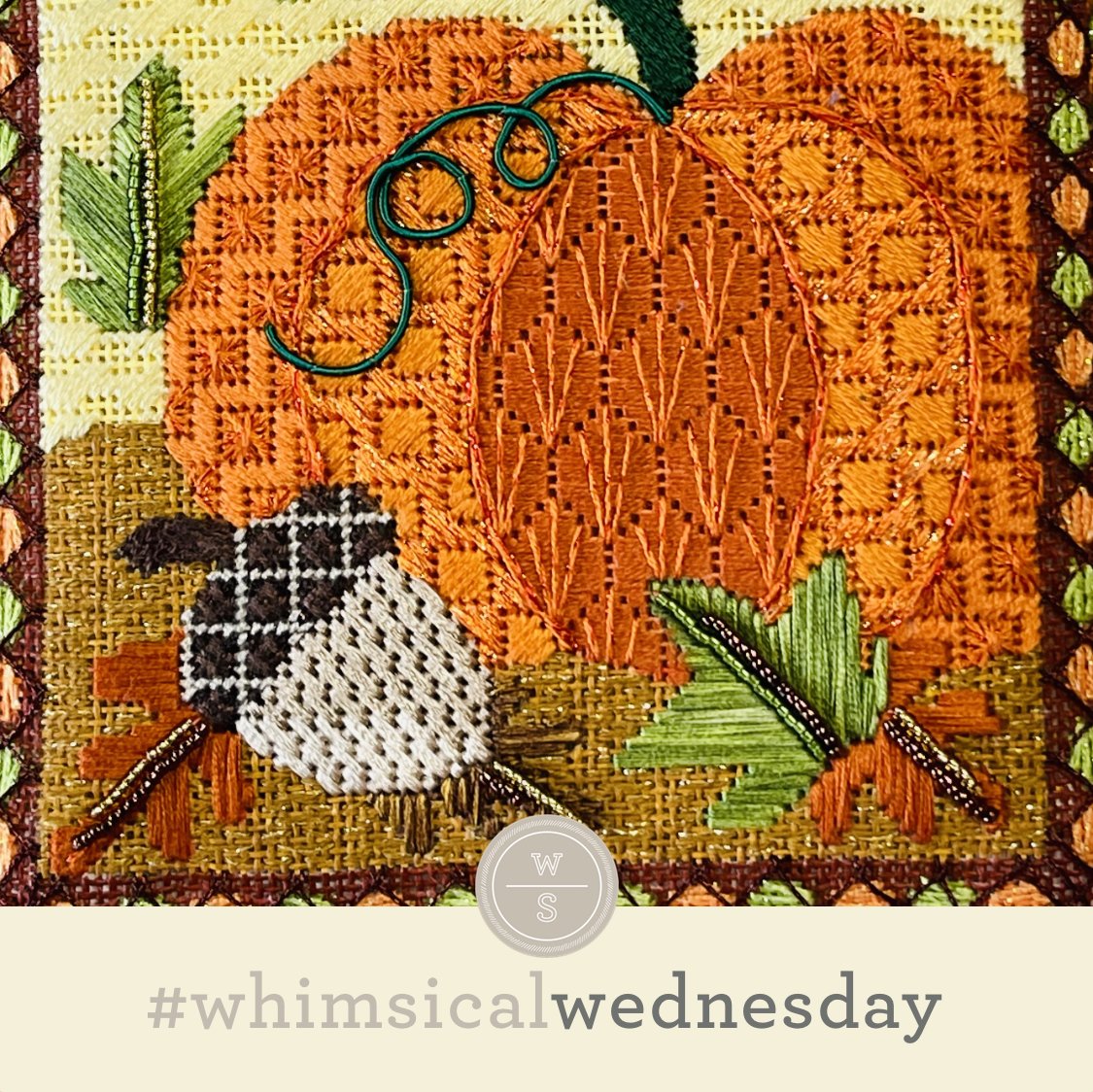I was on the hunt for a large stitch for a beautifully painted background. And, I’m still not sure this is large enough but I still love it so. (And, yes, today’s title is a subtle nod to Huey Lewis and the News, one of my guiltiest music pleasures to this day.)
The stitched sample uses two plies of Soie d’Alger (black lines) and gold Kreinik (yellow lines). I used a modified back stitch to add the rectangle sides. When you are working with wide open stitches, I always recommend stitching nearby areas before you begin, so you have a place to bury your threads at the beginning and the end. I also wove the Kreinik around threads on the back
The stitched sample will make a lovely background…any background. It is a subtle enhancement to any background painted in a solid color. For example, the stitched sample is two plies of Soie D'Alger (black lines) and a Kreinik Metallic (yellow lines). I think this will be a perfect background for a floral still life or a cute saying. I’m planning on using it for a dramatic multi-color background. I am aware the painted background will steal the show here, which is my objective. The understated nature of this stitch is a perfect complement to the dramatic painting.
Just a reminder about how to evaluate stitches for size on your project.
As you are auditioning stitches (from any stitch source), count the number of canvas threads on the diagram that match your mesh size. And there you have what an inch of the stitch will look like. Evaluate that against the area where you plan to use the stitch and make your final decision. If you start integrating this step into your stitch selection process, you may be surprised at how many stitches you think are large are much smaller than you realize.
By (sometimes) including this step in my own process, I find I am now integrating much longer stitches than I ever thought I would. I used to think a stitch six rows long was super big. I have very much changed my tune, which has helped me expand my creativity, especially for large space stitches.
Today’s stitch diagram, along with all other #whimsicalwednesday and #smallspacesunday stitch diagrams, can also be found on a Pinterest board here. Be sure to follow whimsicalstitch.com on Facebook, Pinterest, Instagram, and Twitter.
If you like what you see on this blog, there's more. Mary’s Whimsical Stitches is a series of three books offering contemporary how-to collections of more than 250 stitches (in each volume) for all stitchers, regardless of skill level. All books include updated and sequenced diagrams from this blog plus a collection of all-new stitches from private lessons and other class projects. Visit here to find a needlepoint retailer that carries my books.
New to needlepoint or looking for a refresher? Please download a handy how-to guide covering basic needlepoint stitches and stitch compensation techniques along with new top-line information on needlepoint materials and tools, how to handle threads, and other helpful needlepoint resources.
whimsicalstitch.com also sells Stitch Guides and Stitch Concepts for Melissa Shirley Designs, Zecca Designs, Sandra Gilmore, Purple Palm, Maggie, and Penny MacLeod, and many more. Click here to see the newest guides and click here to see the entire collection.
I hope you have the perfect spot for this stitch! Please enjoy! Have a wonderful #whimsicalwednesday!
A Note about Diagrams
I use color in diagrams to make them as clear as possible. The primary function of different colored lines is to illustrate a stitch sequence. For example, the layering of colors demonstrates you add them in that order. They can also provide ideas on integrating additional threads (one line for each color). Or, you can use the same thread for all color lines. That's where I encourage you to use your imagination for the space you are stitching!

























